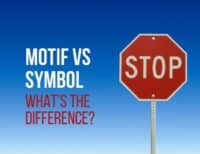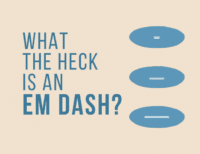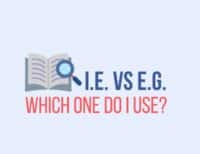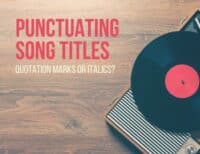
My friends and I were hanging out over the long weekend, and somehow we got started quoting Love Actually. I love that movie, and it's probably one of my favorite holiday films, but I was thinking today of why I liked it so much. I finally decided that it's because it tells so many different love stories and makes you care about every one of the characters involved. It can definitely be a challenge to keep up with all the intertwined relationships, but you get the gist of them pretty quickly.
In our exploration of love triangles, I'd be remiss if I didn't include other love polygons. Love Actually isn't exactly a traditional polygon with its sets of relationships, but there are connections with all of the characters, and they can be traced in a Kevin Bacon-esque six degrees of separation manner. There are other structures you can play with too, depending on what kind of story you want to tell.
Love Quadrilaterals
Sometimes it's nice when everybody has a somebody to love who loves them back. Love triangles can be stressful, and sometimes your reader base will have very strong opinions about how the triangle should resolve itself. Adding a fourth party yourself can put the control in your hands, especially if that fourth party is introduced early and their presence can be explained in a natural way.
You probably read A Midsummer Night's Dream in middle school or high school, right? You remember the four lovers: Hermia, Lysander, Demetrius, and Helena. Their story begins as a pair of love triangles that happen to share a side, and it ends as a square, with both pairs happy and content. A weird version of this also appears in the final book of the Twilight series, in which Jacob, since he is unable to be with a married Bella, imprints on her daughter, thereby marking her as his mate for life. Happily (creepy) ever after for everyone!
Love Polygons
Love triangles are stressful and can lead to a lot of emotional turmoil. Love octagons are hilarious. The general rule is that the more relationships you pile on, the more hilarity ensues, and the less serious the tone of the work. Often times, the entire plot of a work that uses a multi-sided love polygon is the resolution of the polygon.
For polygons with more than four sides, you need a couple things to be in place. You need three ideal relationships that aren't active due to miscommunication, misplaced affection, or some other reason that the characters are suppressing their desires. There's usually one person who's the biggest block to all your couples living happily ever after, and that can be either the hero or the villain. Once that complication has been taken care of, everyone is free to be happy with their beloved.
Pretty much the entire plot of Pride and Prejudice is focused on resolving a love polygon, and Shakespeare's Twelfth Night and its teen film adaptation She's The Man, as well as the other Shakespearean teen adaptation 10 Things I Hate About You, all hit this relationship model well.
Romantic triangles in literature can be points of contention if executed poorly, but toying with other quadrilaterals gives you some additional creative points to work with, and can be a great source of comedy if worked properly.
PRACTICE
Let's try something different. Write for fifteen minutes on love polygons in general. Do you like them? Do they frustrate you? Do you prefer the traditional triangle, or are you a fan of the decagon? Would all writing be better if romantic relationships were written out of fiction entirely? Post your reaction in the comments.







Cool framework study. How do you recommend puzzling the standard dilemma-crisis-decison/action-battle-self revelation-resolution model? For all of the couples as couples, or as individuals or both?
I know that the answer is probably both, but I’m curious about your take.
Anthony… may I suggest that the dramatic model looks more like: “dilemma-crisis-self realization-knowingwhattodo/action-climax.” That is, the character doesn’t earn the moral authority to enter Act III until they’ve “self-realized.” And if that’s the case, the story might seem a tad unreal if everyone was having these “awakenings.” Which is why having one main protagonist usually works best. Let me know what you think of that. Cheers.
The knowing what to do part is definitely missing from my rendering of the equation. Thanks!
Depending on the shape of the story, it could lead to great new conflict, or mini-conflict if there is more than one character who thinks they know what to do …
Good observation. Makes me want to better define “knowing-what-to-do.” It’s knowing vs. deciding. Knowing implies that one sees more, has grown into a bigger worldview. This key moment isn’t one of making yet another decision. Knowing embraces the other. So if two protagonists were to evolve simultaneously into their higher natures, well… I reckon they’d hit it off real good!
Either that, or they’d lay the groundwork for a sequel …
The problem with the love triangle (or any of these polygons, really) is that they tend to be more like love Vs: two parties are interested in the same person, and the person at the apex is thrown out of whack as s/he tries to decide which one that person loves more. The only real triangle I’ve ever see in literature is, as you mentioned in your article, Shakespeare’s Twelfth Night. That isn’t to say there aren’t others out there, but it’s so hard to find a polygon with all of its sides in modern literature.
Love V’s! That describes it perfectly. What a fabulous term. That sums it up perfectly.
Thanks for this lesson in romantic geometry, Liz. I’m currently writing a novel that has some romantic twists to it. (But I don’t like to think of it as a romance novel. I’m sort of in denial of that, I suppose). What would this scenario best be classified as?
Throughout the book…
Ben & Grace both like each other (That’s the short version anyway)
Ezra likes Grace (But Grace doesn’t like him)
Grace’s friend Kylee likes Ezra (But Ezra doesn’t like her)
As far as removing romantic relationships from literature, that would be too bad for words! (Plus, it would be terribly unrealistic.) I do think it can be overdone sometimes though. Every great novel doesn’t haaaave to have to a love story in it.
I can’t completely bash the love-triangle, since it’s so relevant in real life that it tends to transfer well onto page. But it’s so common. I absolutely love it when an author is brave enough to add some more angles to the quadrilateral, and more than that, execute it well.
The standard love triangle can be kind of boring. Especially the sort of triangle where it’s completely obvious from the beginning which pair will triumph. There’s no real tension there and certainly no surprises.
Love triangles that drag on too long get on my nerves too (looking at a popular author here–make the heroine choose one of them already! I don’t care anymore!).
But triangles or polygons that are fresh or unusual or in some ways surprising can be fun. One author I read ended her book with the girl genuinely caring about two different guys. Both guys genuinely cared for the girl. And the writer didn’t resolve the triangle; she just left it hanging. Ordinarily unresolved things like that bug the heck out of me. But in this case, it was at least different! 🙂
I completely agree with you! I want something new and exciting, and that last idea is very intriguing. Not everything in life wraps up nice and neatly in life so why should it in a story.
Me personally, I groan every time I learn that a book I’ve picked up has a love triangle in it. I have a general rule that I must read at least the first three chapters of a novel before I’m allowed to give up on it. If the plot doesn’t interest me, or I haven’t found that one character I can’t help but love, and there’s a love triangle on top of it; chances are it’s going back to the library unfinished. I don’t have any problems with other love polygons, in fact the book I’m writing right now has a love pentagon later on, but in a love triangle there are two people who are solely focused one the one, usually female, character and that just sets for the world to revolve around that one person. This usually then leads to dramatic scenes of wallowing in self pity because they have two people who love them and they can’t chose between them. It’s been done a thousands times, and usually not very well, and I’d rather use my time to read books with new, exciting, and creative ideas.
Love triangles have become so boring and frustrating for me personally! I always believe that the girl(because that is pretty much how it always is) should be with the first guy! Few books have turned out that way for me. I like the idea of a triangle developing more sides and adding to the plot. Though the triangle can be great on its own, I must agree that it must be executed very well to really make me interested.
I have never enjoyed love triangles. Not only do they stress me out, many of them end poorly, in my opinion. Usually the protagonist is in love with somebody who is great, but the second love interest is all but perfect for the protagonist. He – or seldom, she – is introduced in the second book of the newly common trilogy set (seriously, can’t I just find a stand-alone book anymore?). Then, his heart is ripped out (or he dies. Screw that!) and the third book finds our original couple in bliss.
Of course, love quadrilaterals are better, especially if you can get a glimpse early on that Love Interest #2 would be happy with a side character that is introduced. I find the regular love triangles stressful and under-satisfying.
It seems that the love polygons have become more common lately. At least in the Young Adult Fantasy genre, which is my poison of choice. Was “Twilight” at fault? If so, this adds another black mark to my opinion of the series. As far as larger love polygons, I think they’re fun, especially if the focus is on the humor of miscommunication. I still prefer a good old one-to-one ratio love match, though. Love has enough to conquer without adding more people into the mix.
I’m a fan of love stories, but if that is the sole focus, tension, and resolution of the book it becomes tedious. Sure, I don’t mind reading a book for that purpose every so often m but my preference has usually been toward a great story that also happens to have a good love story attached. Mercedes Lackey’s Elemental series comes to mind. the love story integrated throughout the book, but doesn’t come to the forefront of the story until the end, after the climax.
The Taming of the Shrew is the play 10 Things I Hate About You is based on.
Oh my gosh, you’re totally right! I was thinking of She’s the Man, not 10 Things. Thanks for catching that!
If anyone is interested in love triangles, especially polygons they should really look at manga. Every romance based manga I have ever read seems to have love triangles. You have the ones where there is a central couple but both parties have one or more rivals to contend with. You also have the harem/reverse harem mangas where the main character has multiple characters battling for their attention. Then you have “School Rumble” where the whole story is about multiple love triangles were everyone is in love with someone who is in love with someone else.